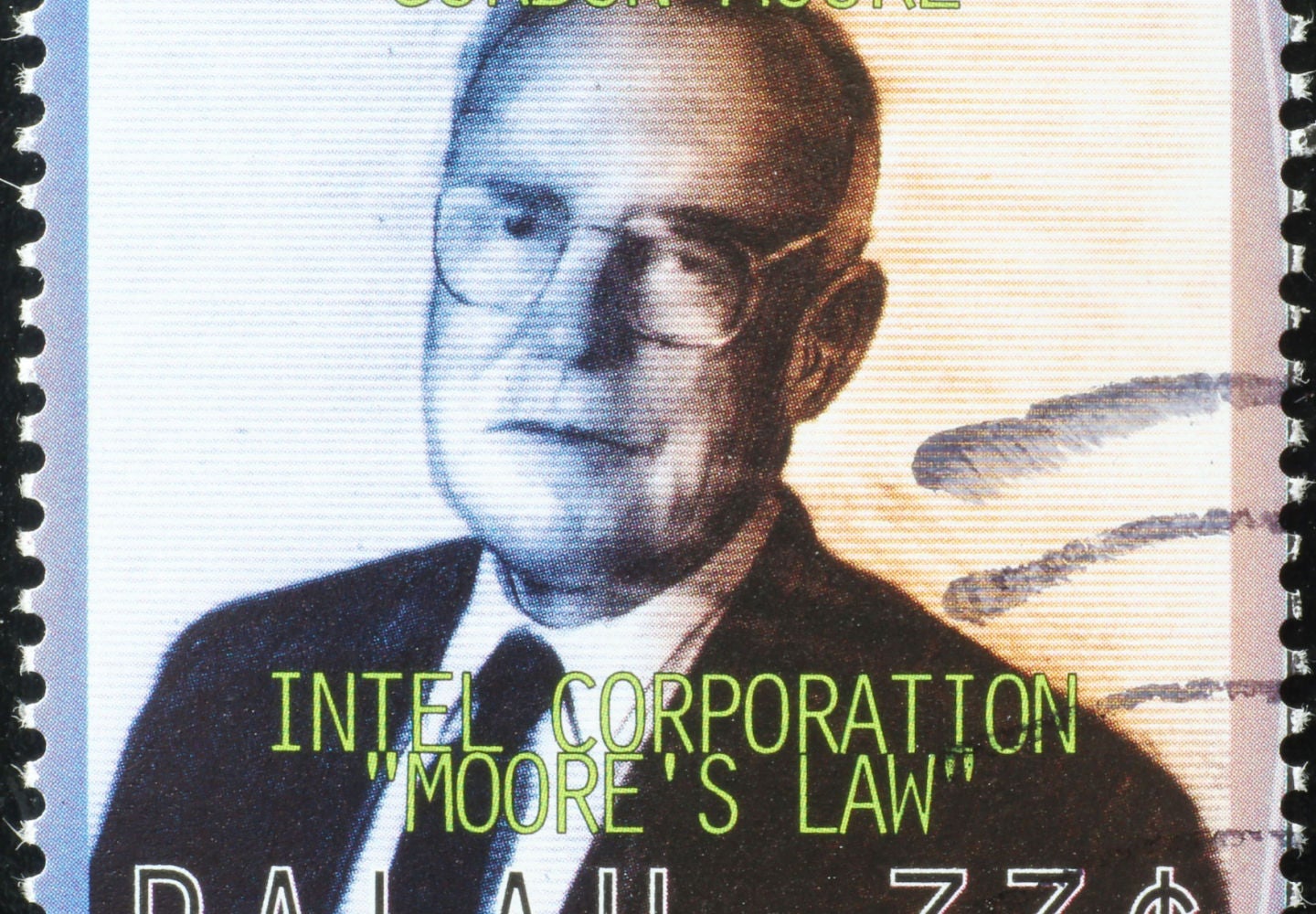Gordon Moore, who set up Intel in 1968 with another co-founder Robert Noyce, will forever be remembered perhaps not so much for creating Intel, though that is undoubtedly significant, but for his name being associated with the law that has governed the semiconductor industry since 1965.
Moore had predicted in an article that the number of transistors and other components on a chip would double every year for the next decade. The prediction was dubbed ‘Moore’s Law’ and it is arguably the law that has been at the heart of the computer industry’s inexorable growth over the last 58 years. It also made a legend out of its originator.
Gordon Moore and the law that drove an industry
Moore later explained that he wanted to predict that this would be the way to make electronics inexpensively. His prediction suggested that the number of transistors on a chip would leap from 60 to 60,000 over a ten-year period. The claim was dubbed by Moore himself as a wild extrapolation, but his prediction turned out to be completely right. More than a law, it created the momentum that drove—and perhaps continues to drive—an industry.
The last few years have led to a succession of headlines that Moore’s Law has been superseded by science because, as Moore’s Law has been driven by the decreasing size of transistors, we are now nearing the minimum transistor size. IBM’s current experimental transistors are only around one order of magnitude larger than the silicon atoms that are used to make them.
The growing costs of making and cooling transistors are not helping Moore’s Law. For example, making a new 10nm chip costs around $170 million. Then it is almost $300 million for a 7nm chip, and over $500 million for a 5nm chip. There should be a law for that, you might say. And there is. Moore’s Second Law (also known as Rock’s Law, after Arthur Rock, an investor who supported the ‘traitorous eight’ including Moore after they left Shockley Semiconductor Laboratory and ultimately founded Fairchild Semiconductor) states that the cost of a semiconductor chip fabrication plant doubles every four years.
Moore’s Law is still valid, some maintain
Some argue that the thinking behind Moore’s Law still holds true, because the trend of increasing computational power continues, even if it is no longer fully driven by the decreasing size of transistors. Instead, computational power increasingly comes from advances in supercomputers, cloud computing, and new ways of writing software.
How well do you really know your competitors?
Access the most comprehensive Company Profiles on the market, powered by GlobalData. Save hours of research. Gain competitive edge.

Thank you!
Your download email will arrive shortly
Not ready to buy yet? Download a free sample
We are confident about the unique quality of our Company Profiles. However, we want you to make the most beneficial decision for your business, so we offer a free sample that you can download by submitting the below form
By GlobalDataMoore’s connection with Intel continued until 2006, first as CEO from 1979 to 1987, then as chair, and finally as chair emeritus. Like many of those who created the computer industry, including Bill Gates at Microsoft, Moore eventually turned to philanthropy around the San Francisco Bay area, including supporting environmental conservation, scientific research, and higher education. He was also an avid sport fisherman.
The last few years have seen the tech baton being passed on from Steve Jobs at Apple, Gates, and Moore to a new generation including Tim Cook, Satya Nadella, and Pat Gelsinger, though it might be a stretch to call them ‘heroes’.
To be one of those, unless you are Jobs or Gates, you must define a law. Gordon Moore did, and his legendary law lives on. An Elton John song, ‘The Ballad of Danny Bailey’, about a Kentucky gunslinger, has the memorable line, “We’re running short of heroes back up here in the hills”.
You could easily argue that this is true with the recent passing of Gordon Moore, though, for the tech industry, it is certainly more about California than Kentucky and (silicon) valleys than hills.








Related Company Profiles
Apple Inc
Intel Corp